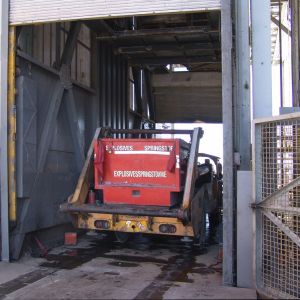
Levelok® Cage Holding System
Improved Productivity. Enhanced Safety.
Levelok®’s Cage Holding System has been providing safe and rapid transfer of workers, material and ore with mine conveyances used in vertical shafts since the 1980s. The Levelok® Cage Holding System consists of a power pack and clamps which hold a cage steady during the transfer of men and/or material. The clamps release their grip at a controlled rate to allow the rope stretch to be taken up smoothly.





































